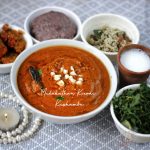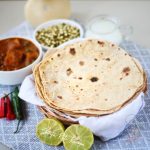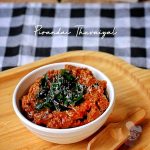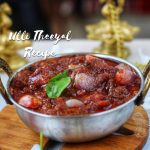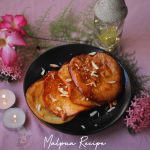"Palani Panjamirtham, a venerable treasure cherished for centuries, embodies the essence of tradition and divine indulgence. With its rich history steeped in sacred significance, this ambrosial blend transcends mere taste to evoke a profound sense of reverence and spiritual nourishment. Each spoonful of this golden elixir whispers tales of devotion and blessings, carrying within it the sanctity of the hills. From its heavenly aroma to its unrivaled taste, Palani Panjamirtham stands as a testament to the timeless allure of ancient recipes passed down through generations, enriching both body and soul with its divine essence."
Where Is Palani Hills?
Nestled amidst the rolling hills of Tamil Nadu, India, Palani emerges as a sacred haven, captivating visitors with its scenic beauty, mystical allure and profound spirituality. As one ventures into this ancient city, they are greeted by a serene landscape adorned with lush greenery and towering peaks, setting the stage for a journey of both inner reflection and outward exploration.
At the heart of Palani lies its crowning jewel, the revered Palani Murugan Temple, an architectural marvel that stands as a testament to centuries of devotion and tradition. Perched atop the Palani Hills, this sacred sanctuary beckons pilgrims from far and wide, offering a sanctuary for spiritual seekers and devotees alike.
Beyond its spiritual significance, Palani enchants visitors with its natural splendor, boasting panoramic vistas that stretch as far as the eye can see. The verdant hillsides and cascading waterfalls serve as a canvas of tranquility, inviting travelers to immerse themselves in the breathtaking beauty of the region.
As one meanders through the labyrinthine streets of Palani, they encounter a tapestry of vibrant colors, bustling markets, and warm smiles, each offering a glimpse into the city's rich cultural tapestry. From the vibrant bazaars brimming with spices and textiles to the quaint cafes serving up traditional delicacies, Palani captivates the senses at every turn.
But perhaps the true essence of Palani lies not merely in its physical attributes, but in the palpable sense of spirituality that permeates every corner of the city. Here, amidst the ancient temples and sacred shrines, one discovers a profound connection to something greater than themselves – a timeless reminder of the enduring power of faith and devotion. In Palani, the past and present converge in a harmonious dance, weaving together the threads of history, culture, and spirituality to create an experience that is as enriching as it is unforgettable.
How Did Panjamirtham Originate At Palani?
Panjamirtham- "the nectar of five ingredients" is the divine concoction revered for its sacred significance, has its roots deeply intertwined with the historic city of Palani. Legend has it that the origins of Panjamirtham can be traced back to a celestial encounter experienced by the sage Bhogar, a revered figure in Tamil Nadu's spiritual lore.
According to the ancient tales, Bhogar, a master alchemist and yogi, was guided by divine intuition to create a potent elixir imbued with celestial blessings. Drawing upon his profound knowledge of herbs and alchemy, Bhogar meticulously blended five key ingredients, each representing elements of nature and spiritual significance. These ingredients are typically believed to include bananas, jaggery (cane sugar), ghee (clarified butter), honey, and cardamom, though variations may exist in different traditions.
Which Kalkandu Suits The Best For Panjamirtham? Diamond Kalkandu Or Karkandu?
Both Diamond Kalkandu (sugar crystals) and Rock Candy (also known as sugar candy or crystallized sugar) can be used as sweetening agents in Palani Panjamirtham. The choice between the two often comes down to personal preference and availability.
Diamond Kalkandu is traditionally used in South Indian cuisine and is known for its distinctive flavor and texture. It dissolves slowly, imparting a subtle sweetness to dishes, and adds a unique touch to Panjamirtham.
Rock Candy, on the other hand, is crystallized sugar that can vary in size and color. It dissolves more quickly compared to Kalkandu and provides a concentrated sweetness to the mixture.
Both options can enhance the flavor and sweetness of Palani Panjamirtham, so the choice between Diamond Kalkandu and Rock Candy ultimately depends on individual taste preferences and the desired texture of the final dish. Some may prefer the traditional flavor of Kalkandu, while others may enjoy the simplicity and quick dissolving nature of Rock Candy. Experimentation with both can help determine which one best suits your palate and the intended flavor profile of the Panjamirtham. Both are good alternatives to sugar.
Which varieties of banana tastes the best for palani panjamirtham?
For Palani Panjamirtham, typically, any sweet and ripe banana variety can be used. However, some varieties are preferred for their flavor and texture. Common banana varieties suitable for making Palani Panjamirtham include:
Ney Poovan: Known for its sweet taste and creamy texture, Ney Poovan bananas are often preferred for their natural sweetness.
Rasthali : Rasthali bananas are popular in South India for their firm texture and slightly tangy flavor, which complements the sweetness of other ingredients in Panjamirtham.
Red Banana: Red bananas are slightly sweeter and have a hint of berry flavor compared to other varieties, adding depth to the taste of Panjamirtham.
Poovan: Poovan bananas are aromatic and sweet, with a soft and creamy texture, making them ideal for blending into a smooth consistency for Panjamirtham.
These banana varieties are traditionally used in South Indian cuisine and are well-suited for making Palani Panjamirtham due to their sweetness, flavor, and texture. According to me, trying and tasting each variety of banana is a pure bliss and an endless exploration.
What Are The Health Benefits Of panjamirtham?
Bananas: Rich in potassium, bananas are known to support heart health, aid digestion, and provide a natural source of energy. They also contain vitamins C and B6, as well as dietary fiber, which contribute to overall well-being.
Jaggery (Cane Sugar): Unlike refined sugar, jaggery retains some of the nutrients present in sugarcane, including iron, magnesium, and potassium. It is often used as a healthier alternative to processed sugar and is believed to help regulate blood sugar levels, boost immunity, and aid in digestion.
Ghee (Clarified Butter): Ghee is a staple in traditional Indian medicine (Ayurveda) and is considered beneficial for various aspects of health. It is rich in fat-soluble vitamins like A, D, E, and K, and they also have anti-inflammatory properties. Ghee is believed to support digestion, strengthen the immune system, and promote healthy skin and hair.
Honey: Raw honey is renowned for its antioxidant properties and potential antibacterial and antifungal effects. It is often used in traditional medicine to soothe sore throats, alleviate coughs, and promote wound healing. Honey also provides a natural source of energy and may help regulate blood sugar levels when consumed in moderation.
Cardamom: This aromatic spice is prized for its medicinal properties and has been used for centuries in traditional medicine systems like Ayurveda and traditional Chinese medicine (TCM). Cardamom is believed to aid digestion, alleviate gastrointestinal issues, and freshen breath. It also possesses antioxidant and anti-inflammatory properties, which may contribute to overall health and well-being.
Edible camphor: When used in small amounts, it is believed to aid digestion and relieve digestive issues such as bloating and gas due to its curative properties. Additionally, it is sometimes used in traditional medicine for its potential to alleviate respiratory congestion and has been used in Indian kitchen since ages.
Raisins: They are a nutrient-dense snack rich in fiber, antioxidants, and essential minerals like potassium and iron, which may support heart health, aid digestion, and help regulate blood sugar levels. Additionally, the natural sugars found in raisins provide a quick energy boost, making them a convenient and satisfying option for fueling workouts or combating fatigue.
Rock candy: It also known as sugar candy or crystallized sugar, is primarily composed of sucrose and may offer a quick source of energy. Additionally, some believe that consuming rock candy in moderation may help alleviate minor throat irritations due to its soothing properties.
9. Dates: Dates are a rich source of iron and has high anti oxidants. They are a rich source of fiber and has high potassium. They boost energy and aids digestion.
How Does Palani Panjamirtham Stands The Test Of Time And Still Retains Its Popularity All Over The World?
Cultural Tradition: Panjamirtham is deeply rooted in South Indian culinary and religious traditions, with a history dating back centuries. Its preparation and consumption are often passed down through generations, preserving its heritage and ensuring its continued popularity.
Nutritional Value: Despite its symbolic significance, Panjamirtham is also valued for its nutritional content. The natural ingredients used in its preparation, including bananas, jaggery, honey, ghee, and cardamom, offer a blend of vitamins, minerals, and antioxidants, contributing to its appeal as a wholesome and nourishing food.
Taste and Flavor: The harmonious blend of sweet, aromatic, and flavorful ingredients gives Panjamirtham its distinctive taste profile, making it a delightful sensory experience for those who consume it. Its unique flavor combination appeals to a wide range of palates, contributing to its continued popularity.
Global Reach: With the advent of globalization and increased connectivity, Panjamirtham has gained recognition and popularity beyond its traditional boundaries. Devotees and enthusiasts worldwide seek out authentic Panjamirtham recipes and products, further spreading its appeal and ensuring its continued relevance on a global scale.
Cultural Festivals and Events: Palani Panjamirtham is often prepared and distributed as prasadam (divine offering) during religious festivals, ceremonies, and events associated with Lord Murugan and other Hindu deities. These occasions serve as opportunities for devotees to partake in the sacred tradition of consuming Panjamirtham, thereby perpetuating its popularity and significance.
In summary, Palani Panjamirtham's enduring popularity can be attributed to its deep-rooted cultural and religious significance, nutritional value, unique taste profile, and global recognition, all of which contribute to its timeless appeal and widespread popularity across the world.





















